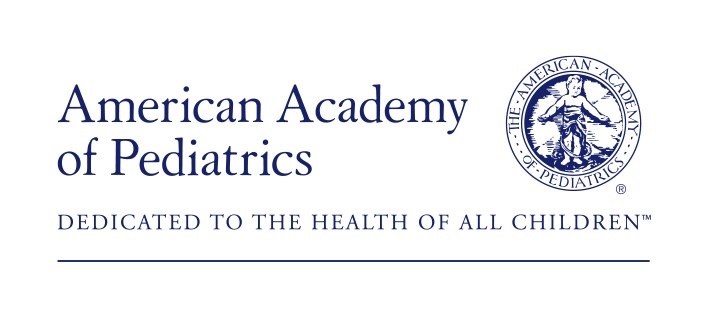data & research
-
 Data presented for 2010 through 2019 are from Vintage
Data presented for 2010 through 2019 are from Vintage
2019 Bridged-Race Postcensal Population Estimates,
which are produced under a collaborative arrangement
between the Center for Disease Control's National
Center for Health Statistics and the U. S.
Census Bureau. With each annual release of the
Bridged-Race Estimates, the estimates for each year
beginning with 2010 are revised, which means that
previously published estimates for the same years
will be slightly different from the most current
estimates presented here.
Values for 1990, 2000, and 2010 represent revised
population estimates for July 1, 1990, July 1, 2000,
and July 1, 2010 - not actual Census counts from
April 1, 1990, April 1, 2000, and April 1, 2010. Selected KIDS COUNT Indicators
Selected KIDS COUNT Indicators
for State in North CarolinaClick Here -
 CDC reports COVID-19 case counts, deaths, and
CDC reports COVID-19 case counts, deaths, and
laboratory testing numbers daily online. Data on the
COVID-19 website and CDC’s COVID Data Tracker are
based on the most recent numbers reported by states,
territories, and other jurisdictions. Data are dependent
on jurisdictions’ timely and accurate reporting.
In addition, CDC regularly reports provisional death
certificate data on the NCHS website. Reporting the
number of deaths by using death certificates
ultimately provides more complete information but is
a longer process and, therefore, these numbers will
be less than the deaths count on the COVID-19 website. Coronavirus Disease 2019 (COVID-19)
Coronavirus Disease 2019 (COVID-19)
Cases in the U.S.Click Here -
 This category includes information on demographics
This category includes information on demographics
(population by age, gender, race/ethnicity), income
(people in poverty by demographic grouping, median
family income), and state fiscal distress (unemployment,
food stamp participation, foreclosures). North Carolina:
North Carolina:
Demographics & the EconomyClick Here -
 This dashboard presents and overview of trends in state
This dashboard presents and overview of trends in state
reporting and performance rates for the Centers for
Medicare & Medicaid Services Child and Adult Core Sets of
health care quality measures from fiscal years 2010-2018.
The Child and Adult Core Sets provide CMS, States, and
other stakeholders a standardized, nationwide measurement
tool for monitoring and improving the quality of care for
children and adults enrolled in Medicaid and the State
Children's Health Insurance Program (CHIP). Child & Adult Core Set Quality
Child & Adult Core Set Quality
Measure Reporting DashbordClick Here -
 -People: Demographic data from the American
-People: Demographic data from the American
Community Survey (ACS), including age, race and
ethnicity, migration and immigration,
education, household size, and family composition.
-Jobs: Economic data from the Bureau of Labor
Statistics and other sources, including information
on employment trends, unemployment, and
industrial composition of employment from the ACS.
-County classifications: Categorical variables
including the rural-urban continuum codes, economic
dependence codes, persistent poverty, persistent
child poverty, population loss, onshore oil/natural gas
counties, and other ERS county typology codes.
-Income: Data on median household income, per
capita income, and poverty
(including child poverty).
-Veterans: Data on veterans, including service period,
education, unemployment, income, and other
demographic characteristics. Atlas of Rural Small-Town AmericaClick Here
Atlas of Rural Small-Town AmericaClick Here -
 Select from a wide range of data on health disparities,
Select from a wide range of data on health disparities,
health workforce, demographics, and more.
Explore how metropolitan and nonmetro counties
compare, nationwide and by state.Rural Data ExplorerClick Here
-
 State-level reports are the best publicly available data
State-level reports are the best publicly available data
on child COVID-19 cases in the United States. The
American Academy of Pediatrics and the Children’s
Hospital Association are collaborating to collect and share
all publicly available data from states on child COVID-19
cases (definition of “child” case is based on varying age
ranges reported across states; see report Appendix for
details and links to all data sources).Children and COVID-19:
State-Level Data ReportClick Here
-
 This report provides preliminary estimates of Adoption and
This report provides preliminary estimates of Adoption and
Foster Care Analysis and Reporting System (AFCARS) data
for FY 2019. As states are permitted to resubmit AFCARS
data, the estimates may change over time. This report
reflects all AFCARS data received as of June 23, 2020
related to AFCARS reporting periods through
September 30, 2019.AFCARS Report #27Click Here
About Benchmarks
Benchmarks is an alliance of nationally accredited agencies committed to providing quality care, leadership, and accountability in services to children, adults and families in North Carolina. Member agencies of Benchmarks deliver a broad continuum of behavioral health, child welfare, education, development disabilities and residential support services.
Copyright © Benchmarks.
